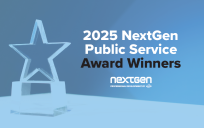In the early days of the coronavirus pandemic, a county government sought to encourage employees to wash their hands as one way to prevent spreading contagions. But there was a problem. An existing policy restricted the installation and use of hot water heaters to facilities equipped with showers. Consequently, most of the agency’s more than 100 buildings, lacking showers, weren’t capable of supporting hot-water handwashing.
The agency looked into retrofitting those facilities with new equipment – a seemingly simple solution that wasn’t simple at all. Contracting the work using traditional procurement processes would have overwhelmed the county’s three procurement officers, increased costs and delayed construction.
“If they had to go through the design-bid-build process and do a competitive bid for every single one of those buildings, that would have taken a very, very long time,” said Jacob Johnson, Vice President of Government and Regulatory Affairs at Gordian, the leading provider of facility and construction cost data, software and expertise for all phases of the building lifecycle.
The reality, he said, is that “the burden of procurement to renovate a couple of bathrooms can sometimes be the same as it is to build an entirely new building.”
The new reality: Big backlogs
The county’s predicament is a microcosm of the program management challenges that state and local governments throughout the country will encounter in the coming years. Backlogs of deferred maintenance, new projects made necessary by the pandemic, and the demand for more energy-efficient facilities will strain capabilities for procuring services and managing projects.
The advancing strain on governments isn’t theoretical. An infusion of new funds for facility upgrades will result in more projects getting the green light. In another era, projects starved for financial resources died before they could develop viability and strain agencies’ management capabilities. Three rounds of pandemic relief passed by Congress — the Coronavirus Aid, Relief, and Economic Security (CARES) Act, the Consolidated Appropriations Act of 2021, and the American Rescue Plan Act — authorized trillions of dollars in new federal spending, including hundreds of billions set aside for states and local governments.
Those funds are “designed to be really flexible, to help governments do whatever it is that they need to do to respond to COVID … and to meet the changing needs of state and local governments,” Johnson said.
Many agencies are using federal funds to restructure facilities in ways that will make them more resistant to viruses in the future. They’re installing touchless features, increasing outdoor spaces and making those spaces more accessible. They’re upgrading HVAC systems and installing virus-resistant materials, such as stainless steel. “It’s going to take some time to get caught up,” Johnson said.
An accelerated process
The county that sought to supply hot water to its more than 100 buildings turned to Gordian, which assists government agencies with challenges that arise when planning, constructing and operating facilities. Gordian brings a triad of capabilities to its solutions: critical data, innovative technology and deep expertise.
The county was able to move forward quickly by using Gordian’s Job Order Contracting (JOC) solution, a procurement tool that enables agencies to procure a significant amount of construction under a single competitive process and to complete multiple individual projects without having to put out multiple bids. They then identified a contractor that had previously completed the competitive bid process for the types of work under consideration. The contractor was on call and ready to complete work at preset unit prices.
“They were able to start work within a few days of when the agency identified the need,” Johnson said. “The traditional design-bid-build process can often take six to 18 months depending on what you’re trying to get done.”
Agencies turn to construction consultants such as Gordian for help throughout the construction lifecycle. A pioneer of Job Order Contracting, Gordian’s solutions also include proprietary RSMeans data and Facility Intelligence Solutions. From planning to design, procurement, construction and operations, Gordian’s solutions help clients maximize efficiency, optimize cost savings and increase building quality.
The flow of funds for state and local government facility projects is expected to continue, driven in part by trillions of dollars in new infrastructure spending proposed by the administration.
“I think we’ll see increased focus on infrastructure that goes well beyond what has traditionally been considered infrastructure by Congress, including broadband, public facilities, efforts around resiliency and climate change,” Johnson said.
“Public officials and procurement staff have a lot on their plates,” he said. “Adding more will make their jobs harder.”
Gordian’s construction cost data, software and services, and unsurpassed expertise in public-sector construction can help agencies to manage the surge.
To learn more, click here.




Leave a Reply
You must be logged in to post a comment.